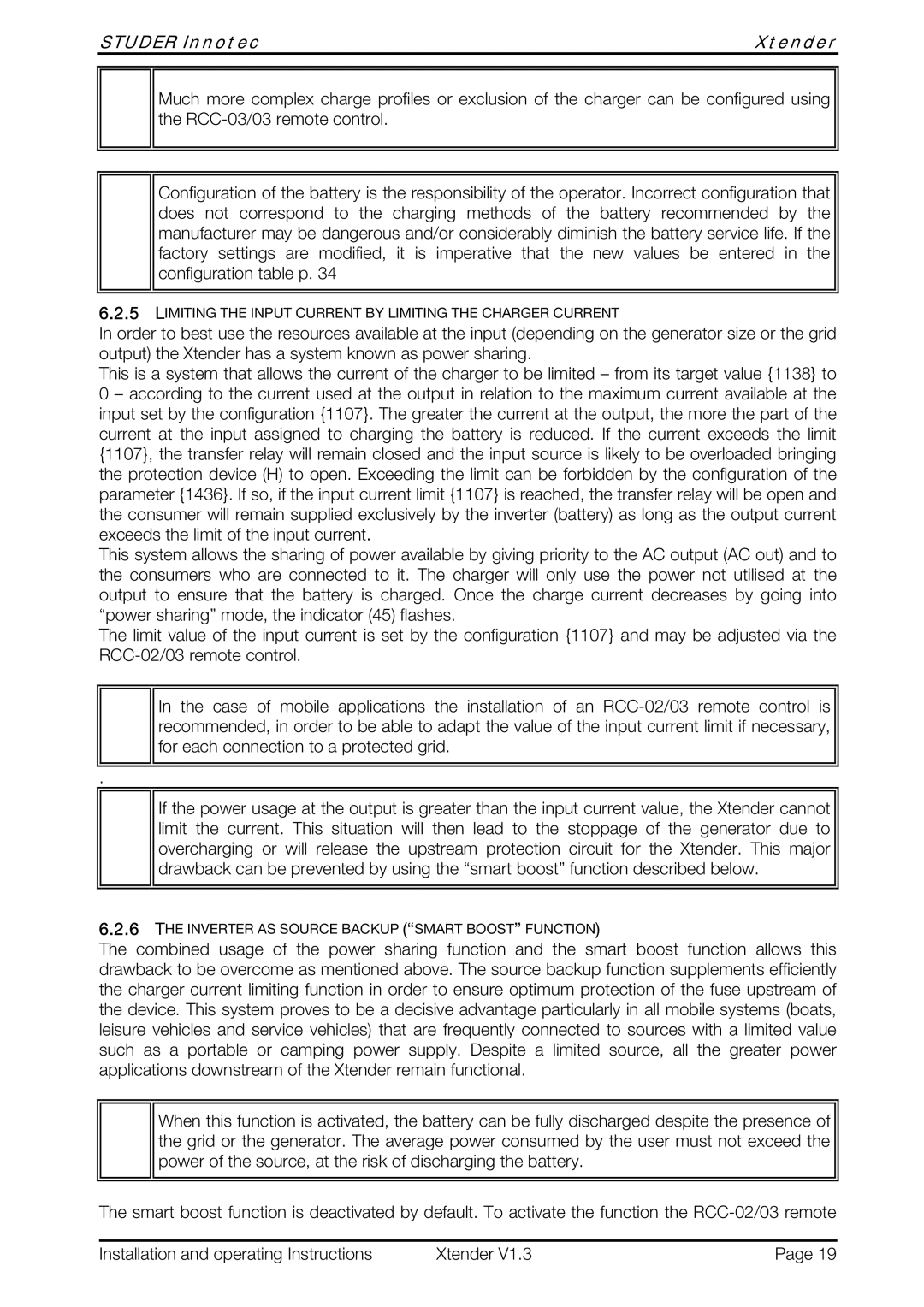
STUDER Innotec | Xtender |
Much more complex charge profiles or exclusion of the charger can be configured using the
Configuration of the battery is the responsibility of the operator. Incorrect configuration that does not correspond to the charging methods of the battery recommended by the manufacturer may be dangerous and/or considerably diminish the battery service life. If the factory settings are modified, it is imperative that the new values be entered in the configuration table p. 34
6.2.5LIMITING THE INPUT CURRENT BY LIMITING THE CHARGER CURRENT
In order to best use the resources available at the input (depending on the generator size or the grid output) the Xtender has a system known as power sharing.
This is a system that allows the current of the charger to be limited – from its target value {1138} to 0 – according to the current used at the output in relation to the maximum current available at the input set by the configuration {1107}. The greater the current at the output, the more the part of the current at the input assigned to charging the battery is reduced. If the current exceeds the limit {1107}, the transfer relay will remain closed and the input source is likely to be overloaded bringing the protection device (H) to open. Exceeding the limit can be forbidden by the configuration of the parameter {1436}. If so, if the input current limit {1107} is reached, the transfer relay will be open and the consumer will remain supplied exclusively by the inverter (battery) as long as the output current exceeds the limit of the input current.
This system allows the sharing of power available by giving priority to the AC output (AC out) and to the consumers who are connected to it. The charger will only use the power not utilised at the output to ensure that the battery is charged. Once the charge current decreases by going into “power sharing” mode, the indicator (45) flashes.
The limit value of the input current is set by the configuration {1107} and may be adjusted via the
In the case of mobile applications the installation of an
.
If the power usage at the output is greater than the input current value, the Xtender cannot limit the current. This situation will then lead to the stoppage of the generator due to overcharging or will release the upstream protection circuit for the Xtender. This major drawback can be prevented by using the “smart boost” function described below.
6.2.6THE INVERTER AS SOURCE BACKUP (“SMART BOOST” FUNCTION)
The combined usage of the power sharing function and the smart boost function allows this drawback to be overcome as mentioned above. The source backup function supplements efficiently the charger current limiting function in order to ensure optimum protection of the fuse upstream of the device. This system proves to be a decisive advantage particularly in all mobile systems (boats, leisure vehicles and service vehicles) that are frequently connected to sources with a limited value such as a portable or camping power supply. Despite a limited source, all the greater power applications downstream of the Xtender remain functional.
When this function is activated, the battery can be fully discharged despite the presence of the grid or the generator. The average power consumed by the user must not exceed the power of the source, at the risk of discharging the battery.
The smart boost function is deactivated by default. To activate the function the
Installation and operating Instructions | Xtender V1.3 | Page 19 |
